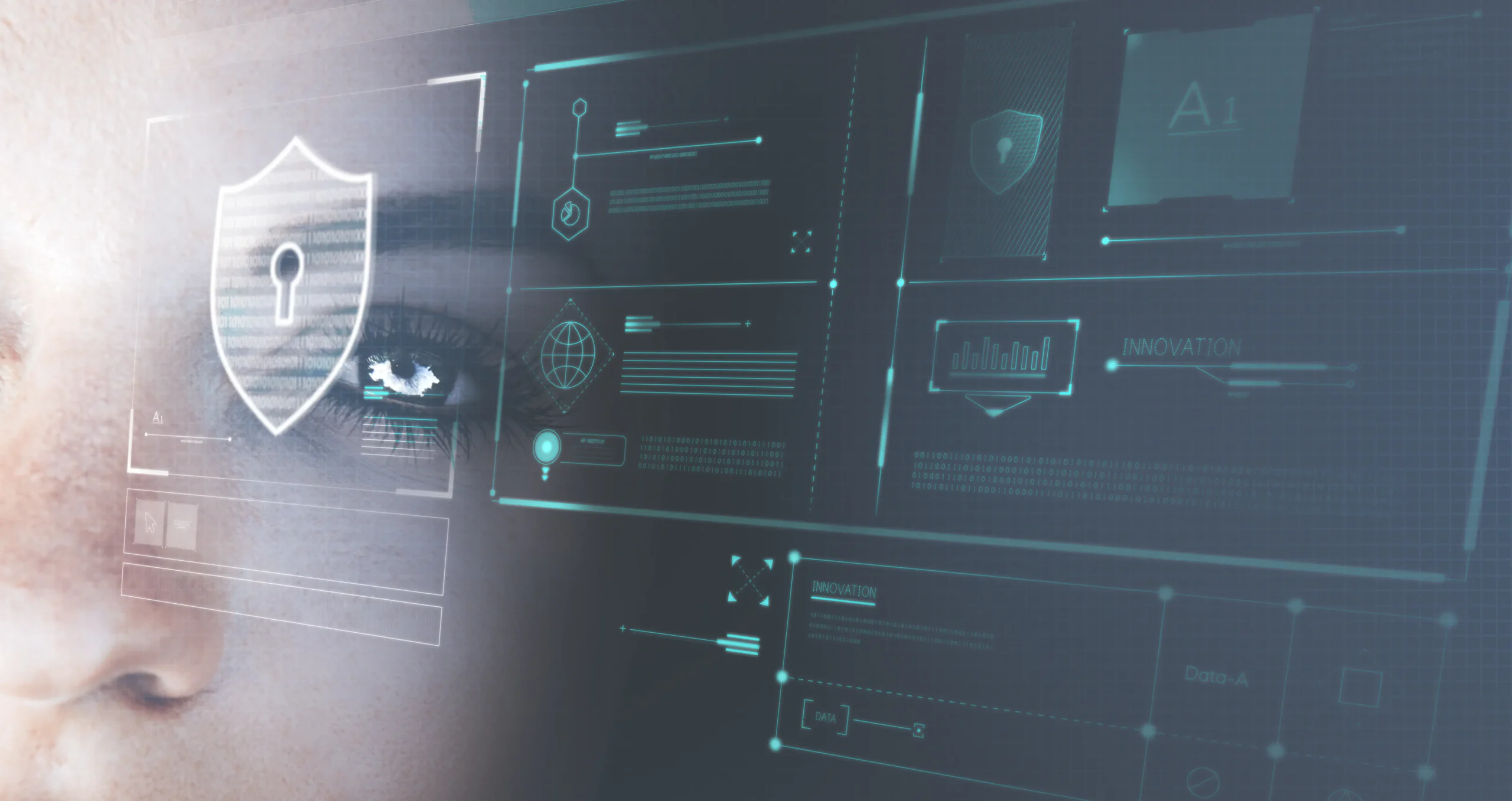AI in Cybersecurity: Protecting against Emerging Threats
Cybersecurity has become a critical concern for organizations of all sizes, as the frequency and sophistication of cyber attacks continue to increase. To combat these threats, organizations are turning to cutting-edge technologies such as Artificial Intelligence (AI) and Machine Learning (ML) in cybersecurity. AI in cybersecurity is proving to be a game changer for protecting organizations, providing advanced threat detection, automated incident response, and the ability to predict potential cyber attacks before they occur.
Unleashing the Power of AI in Cybersecurity
Artificial Intelligence (AI) and Machine Learning (ML) are transforming cybersecurity. These technologies can identify and respond to cyber attacks in real-time, adding an extra layer of security to enterprises. Here are a few examples of how AI and machine learning are helping cybersecurity efforts:

- Real-time threat detection: AI-based systems can analyze network traffic and identify patterns that indicate an attack is imminent. This allows organizations to take prompt action and prevent a potential security breach. Check this product here.
- Automated threat response: ML-based systems can automatically identify and block malicious software and other threats. This eliminates the need for manual intervention and can save organizations a significant amount of time and resources. Click here for an example of this system.
- Phishing attack detection: AI-based tools can automatically detect and respond to phishing attacks. This can help organizations to protect themselves from social engineering attacks and prevent sensitive information from falling into the hands of cybercriminals. Click here for a sample system.
- Network monitoring: AI-based systems can monitor network activity and identify unusual or suspicious behavior that may indicate a cyber attack. This can help organizations to detect and respond to threats more quickly and effectively. You can check here for such a system.
- Adaptability: AI and ML are capable of learning and adapting, which means they can be trained to identify new and emerging threats. This makes them a powerful tool for organizations looking to stay ahead of the curve when it comes to cybersecurity.
Career Opportunities in the Era of AI in Cybersecurity
The application of Artificial Intelligence (AI) and Machine Learning (ML) in cybersecurity not only improves organizational security but also creates new career prospects for workers with experience in these technologies. Here are a few instances of increasingly sought-after positions:

- AI Security Analyst: These professionals are responsible for analyzing data and identifying patterns that may indicate a cyber threat. They use AI and ML tools to detect and respond to security breaches in real time.
- AI Security Engineer: These professionals design, develop, and implement AI and ML-based security solutions. They work closely with cybersecurity teams to ensure that systems are secure and able to detect and respond to threats effectively.
- AI Security Consultant: These professionals advise organizations on how to use AI and ML to enhance their cybersecurity efforts. They provide guidance on the selection and implementation of security solutions, as well as best practices for protecting against cyber threats.
- AI/ML Data Scientists: These professionals are responsible for developing, implementing, and maintaining models and algorithms for cybersecurity purposes. They work with the security team to identify patterns, and anomalies, and to build predictive models for threat detection and response.
- Cybersecurity Automation Engineer: These professionals are responsible for the design, development, and implementation of automated cybersecurity solutions. They work with the security team to integrate AI and ML-based tools to create fully automated security systems that can identify and respond to threats in real-time.
The Growth of Career Opportunities in AI in Cybersecurity
The use of Artificial Intelligence (AI) and Machine Learning (ML) in cybersecurity is not only improving security for enterprises but also creating new and interesting job prospects for workers with experience in these technologies. The topic of cybersecurity is fast expanding, and the rising usage of AI and ML is driving up the need for talented workers in this industry. Here are a few reasons why the future looks promising for people interested in a career in AI and machine learning cybersecurity:

- High demand: As the frequency and sophistication of cyber attacks continue to increase, organizations are becoming more reliant on AI and ML-based security solutions to protect themselves. This is leading to a growing demand for professionals with expertise in these technologies.
- Lucrative salaries: Positions such as AI security analyst, AI security engineer, and AI security consultant are among the highest-paying jobs in the field of cybersecurity. Professionals with expertise in AI and ML can expect to earn above-average salaries and enjoy a high level of job security.
- Innovation: The field of AI and ML cybersecurity is constantly evolving, and professionals in this area have the opportunity to work on cutting-edge technologies. This can make for an exciting and challenging career, with opportunities for growth and advancement.
- Impact: Professionals in AI and ML cybersecurity have the opportunity to make a real difference in the fight against cybercrime. They play a vital role in protecting organizations and individuals from cyber threats, which can have a significant impact on society.
- Automation: The use of AI and ML in cybersecurity is leading to a growing trend of automation. This means that professionals in this field will have the opportunity to work on developing and implementing automated security systems that can identify and respond to threats in real-time.
Real-World Applications of AI in Cybersecurity
Artificial intelligence (AI) is proven to be an effective tool in combating cybercrime. AI has several applications in cybersecurity, and it is being used in a number of ways to improve organizational security. Here are a few real-world instances of how AI is being utilized to guard against cyber threats:

- Automated Phishing Attack Detection: One of the most common cyber threats organizations face is phishing attacks. AI-based tools can automatically detect and respond to phishing attacks by analyzing email content, sender information, and other attributes to identify suspicious activity. This can save organizations a significant amount of time and resources by reducing the need for manual analysis and intervention.
- Network Activity Monitoring: AI can be used to monitor network activity and identify unusual or suspicious behavior that may indicate a cyber attack. By continuously monitoring network traffic and identifying patterns, AI-based systems can detect and respond to threats in real-time, before they can cause significant damage.
- Anomaly Detection: AI-based systems can be trained to identify patterns of normal behavior and detect anomalies that may indicate a cyber attack. This can include identifying unusual login attempts, suspicious network traffic, or other abnormal activity.
- Automated incident response: AI-based systems can be programmed to automatically respond to a detected cyber incident, for example by blocking a malicious IP, shutting down a compromised system, or quarantining a file. This can help organizations to contain a cyber attack quickly and prevent further damage.
- Threat Intelligence: AI can be used to analyze data from various sources such as social media, forums, blogs, etc., and extract useful information that can be used to improve cybersecurity. For example, it can be used to identify new and emerging threats, track cybercrime groups, or identify vulnerabilities in software and systems.
The Future of AI in Cybersecurity
The use of Artificial Intelligence (AI) in cybersecurity is changing the way businesses protect themselves against cyber attacks. As technology advances and becomes more sophisticated, the future of AI in cybersecurity appears bright. Here are a few examples of how AI will affect the future of cybersecurity:
- Advanced Threat Detection: As AI continues to evolve, it will be able to detect and respond to a wider range of cyber threats in real time. This will include advanced threats such as zero-day attacks, APTs, and sophisticated malware.
- Autonomous Cybersecurity: With the advancements in AI, we can expect to see a growing trend in autonomous cybersecurity systems. These systems will be able to identify and respond to threats independently, without the need for human intervention.
- Predictive Cybersecurity: AI-based systems will be able to analyze data from various sources and predict potential cyber threats before they occur. This will help organizations proactively protect themselves against cyber attacks.
- Human-AI Collaboration: As AI becomes more sophisticated, it will augment human capabilities rather than replace them. AI and human experts will work together to analyze data, identify threats and respond to them.
- Cloud-based AI: AI-based cybersecurity solutions will be increasingly deployed in the cloud. This will enable organizations to access the latest AI-based tools and technologies without the need to make large investments in hardware and infrastructure.
- Increasing Reliance on Technology: As organizations become more reliant on technology, the need for skilled professionals in the field of AI cybersecurity will only continue to grow. This will create new job opportunities for experts in AI, ML, data science, and cybersecurity.
Conclusion
Cybersecurity is being transformed by artificial intelligence (AI) and machine learning (ML). These systems can detect and respond to cyber threats in real time, providing an additional layer of protection. AI-powered systems can scan network data and find trends that suggest an impending assault. The application of Artificial Intelligence (AI) and Machine Learning (ML) in cybersecurity is opening up new and exciting career opportunities for individuals with experience in these technologies. The field of cybersecurity is rapidly developing, and the increasing use of AI and ML is increasing the demand for skilled people in this field.
Artificial intelligence (AI) is being utilized to improve corporate security in a variety of ways. AI-powered systems can be trained to respond automatically to a suspected cyber event. This includes things like banning a malicious IP address, shutting down a compromised machine, and quarantining a file. Artificial intelligence (AI) is transforming how organizations defend themselves against cyber assaults. The future of AI in cybersecurity seems bright as technology progresses and gets more sophisticated. AI may be used to detect new and emerging threats, follow cybercrime gangs, and find software and system vulnerabilities.















